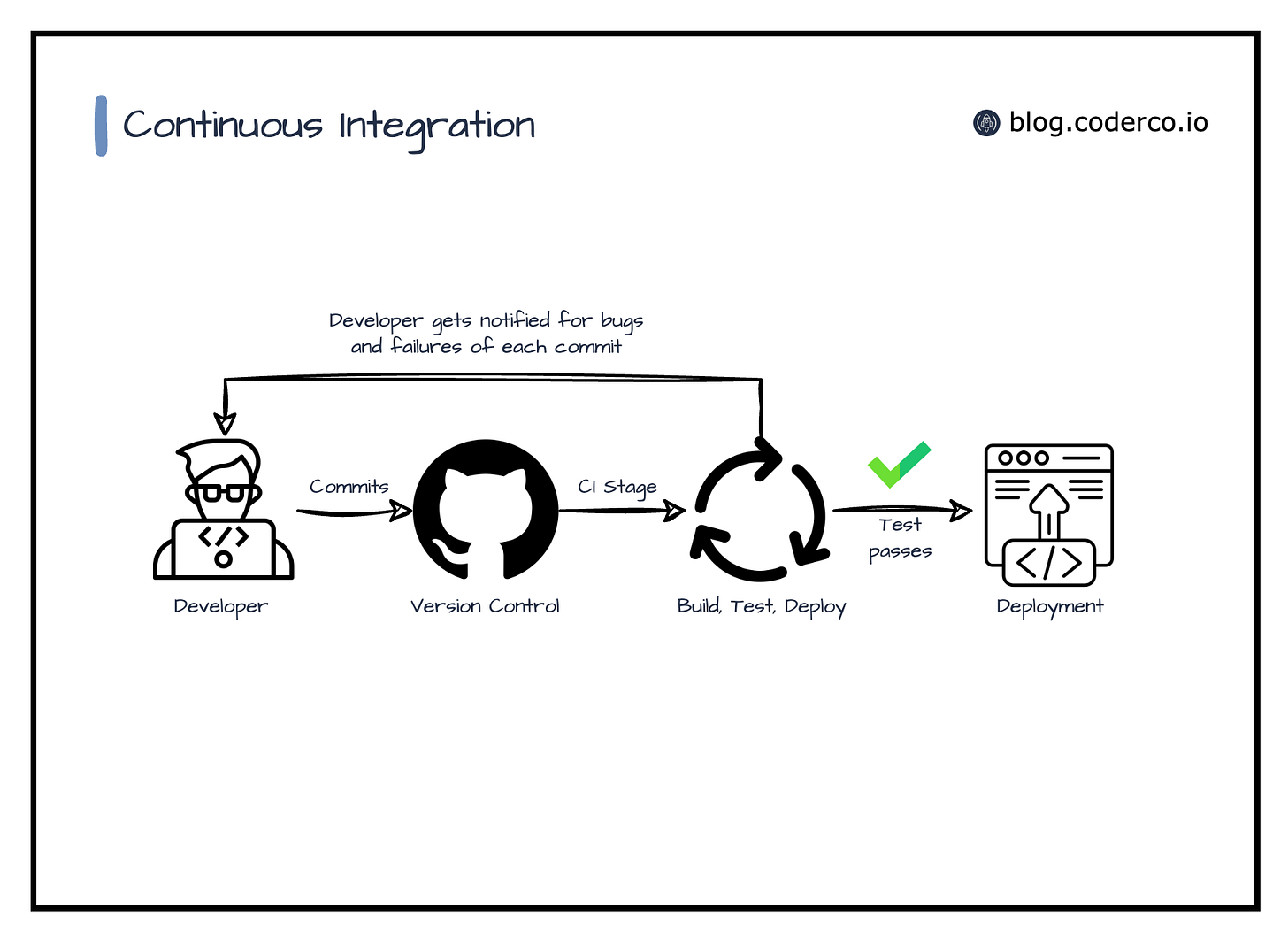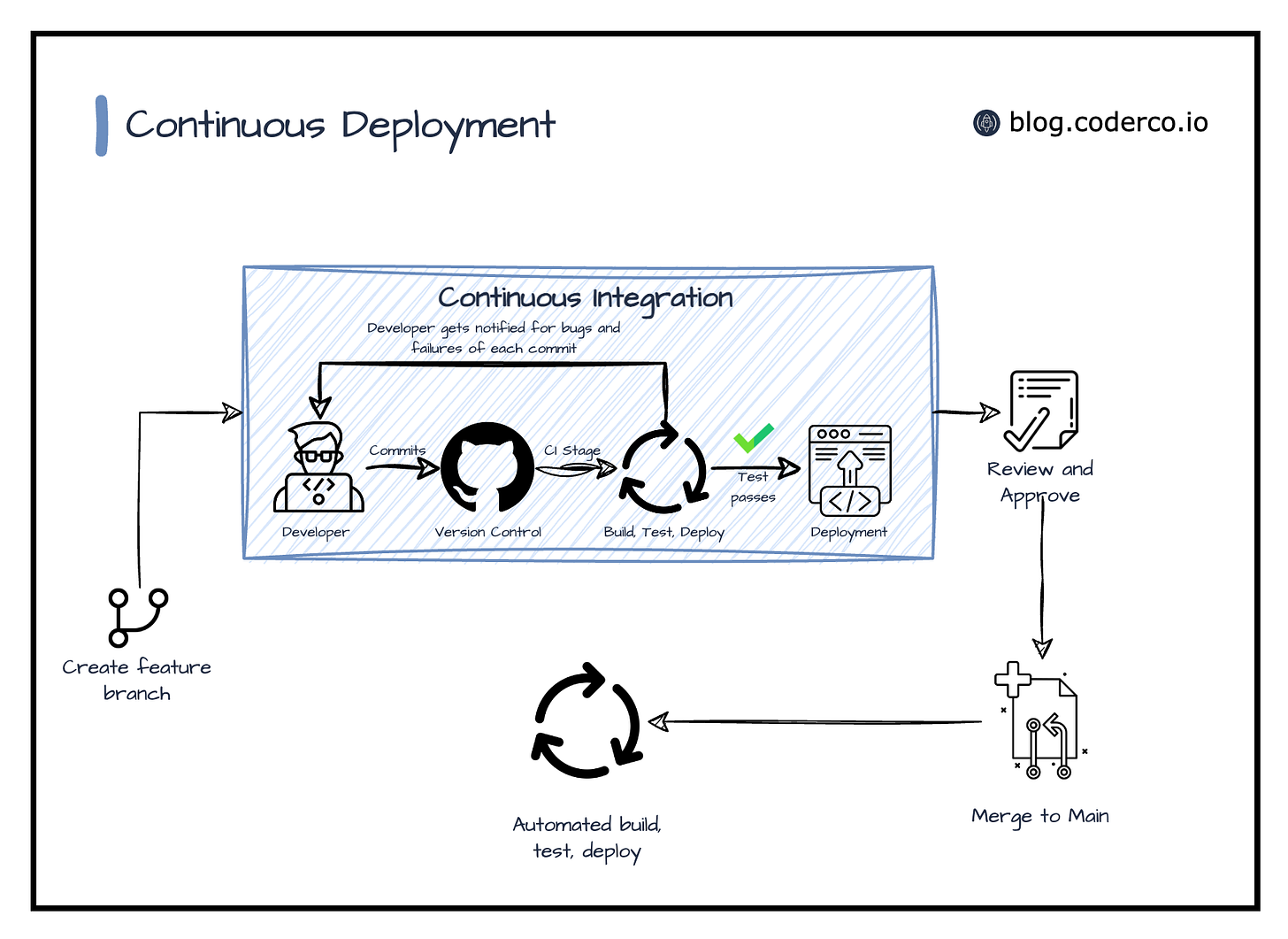𝗖𝗜/𝗖𝗗: 𝗦𝘁𝗿𝗲𝗮𝗺𝗹𝗶𝗻𝗶𝗻𝗴 𝗦𝗼𝗳𝘁𝘄𝗮𝗿𝗲 𝗗𝗲𝘃𝗲𝗹𝗼𝗽𝗺𝗲𝗻𝘁 𝘄𝗶𝘁𝗵 𝗗𝗲𝘃𝗢𝗽𝘀 ♾
Continuous Integration and Continuous Deployment, also known as CI/CD, are two key practices in the world of DevOps. DevOps puts emphasis on collaboration and communication between development and operation teams, with the goal of delivering high-quality software faster. CI/CD is the cornerstone of DevOps, helping teams to streamline the software development process.
Continuous Integration: Ensuring Code Changes Work Together
Continuous Integration (CI) is a software development practice where code changes are integrated and built regularly. The goal of CI is to catch and resolve any issues early in the development process before they become bigger problems. In the context of DevOps, CI helps to improve collaboration between development and operations teams by allowing them to catch and resolve issues early in the development process. Here's a deeper look at how CI works:
Code is committed to a shared repository: Developers regularly commit their code changes to a shared repository, such as GitHub. This allows all members of the development team to access and work with the latest version of the code.
Automated builds and tests: As soon as code is committed, an automated build process starts. This process compiles the code and runs automated tests to make sure the code works as expected. These automated tests are written by DevOps Engineers.
Early detection of issues: If there are any issues with the code, the automated tests will catch them and notify the developers. This allows for quick and early detection of issues, reducing the risk of problems becoming bigger and more difficult to resolve later in the development process.
Improved code quality: By catching and resolving issues early, CI helps to improve the overall quality of the code. This results in a more stable and reliable software product for users.
Continuous Deployment: Delivering Code Changes to Users
Continuous Deployment (CD) is the practice of automatically deploying code changes to a production environment as soon as they pass the automated tests. The goal of CD is to deliver new features and bug fixes to users as quickly as possible. In the context of DevOps, CD helps to improve collaboration between development and operations teams by automating the deployment process. Here's a deeper look at how CD works:
Automated deployment: If the build and tests are successful, the code is automatically deployed to a production environment. This eliminates manual steps and reduces the risk of human error.
Frequent releases: With CD, teams can deploy new versions of their software more frequently, delivering new features and bug fixes to users faster. This results in a better user experience as users have access to new features and improvements more quickly.
Improved collaboration: CD helps to improve collaboration between development and operations teams as the deployment process is automated. This allows both teams to focus on their core responsibilities and work together to deliver high-quality software to users.
CI/CD and DevOps: The Benefits
By using CI/CD, teams can streamline the software development process, catch and resolve issues early, and deliver high-quality software to users faster. Some of the key benefits of CI/CD in DevOps include:
Improved code quality: CI helps to improve the overall quality of the code by catching and resolving issues early in the development process.
Faster releases: CD allows teams to deploy new versions of their software more frequently, delivering new features and bug fixes to users faster.
Better collaboration: CI/CD helps to improve collaboration between development and operations teams, allowing both teams to focus on their core responsibilities and work together to deliver high-quality software to users.
Increased efficiency: By automating the build and deployment process, CI/CD increases efficiency and reduces the risk of human error.
Improved user experience: By delivering new features and bug fixes faster, CI/CD results in a better user experience for end-users.
Summary
To summarise, CI/CD is a critical component of DevOps. By integrating code changes regularly and deploying code to production automatically, teams can streamline the software development process, catch and resolve issues early, and deliver high-quality software to users faster. Whether you're a software developer, operations engineer, or anyone else involved in software development, understanding and implementing CI/CD is essential for success in the world of DevOps.



